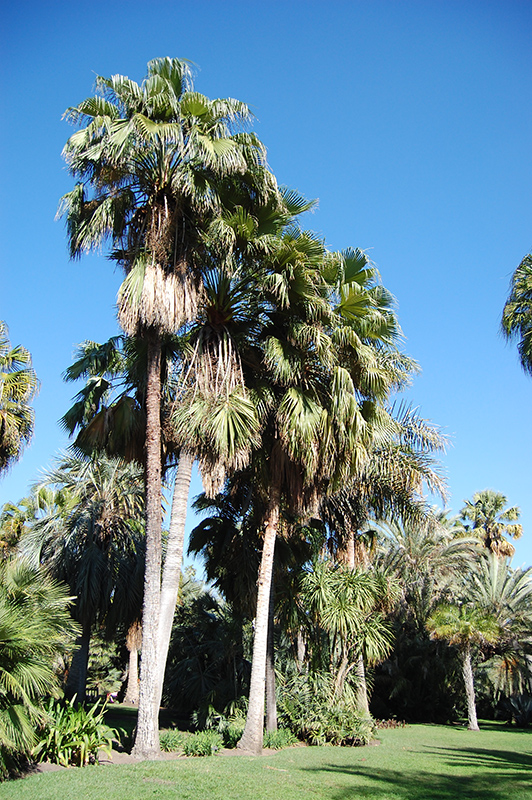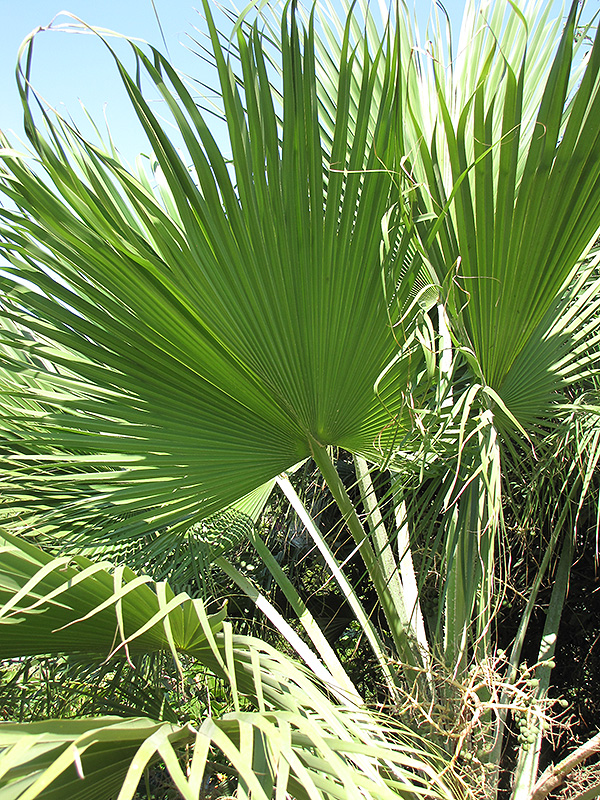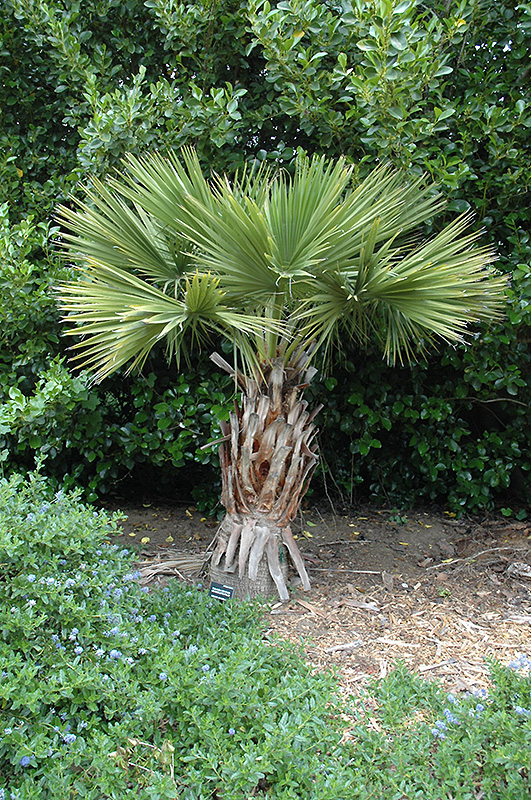Height: 45 feet
Spread: 20 feet
Sunlight:
![]()
Hardiness Zone: 9a
Description:
A solitary, majestic palm that is rare in cultivation; distinguished because it does not have a skirt of persistant dead leaves; it can survive mild freezing temperatures if kept dry, but it is best avoided; a wonderful addition to the tropical landscape
Ornamental Features
Guadalupe Palm has attractive dark green evergreen foliage on a tree with the bulk of the canopy held atop a towering trunk or stem. The large fan-shaped palmate leaves are highly ornamental and remain dark green throughout the winter. The rough gray bark is extremely showy and adds significant winter interest.
Landscape Attributes
Guadalupe Palm is an open evergreen tropical plant with a strong central leader and a towering form, with a high canopy of foliage concentrated at the top of the plant. Its average texture blends into the landscape, but can be balanced by one or two finer or coarser trees or shrubs for an effective composition.
This is a relatively low maintenance tropical plant, and usually looks its best without pruning, although it will tolerate pruning. It has no significant negative characteristics.
Guadalupe Palm is recommended for the following landscape applications;
- Accent
- Shade
- Hedges/Screening
Planting & Growing
Guadalupe Palm will grow to be about 45 feet tall at maturity, with a spread of 20 feet. It has a low canopy with a typical clearance of 4 feet from the ground, and should not be planted underneath power lines. It grows at a slow rate, and under ideal conditions can be expected to live to a ripe old age of 150 years or more; think of this as a heritage tropical plant for future generations!
This tropical plant should only be grown in full sunlight. It does best in average to evenly moist conditions, but will not tolerate standing water. It is very fussy about its soil conditions and must have rich, acidic soils to ensure success, and is subject to chlorosis (yellowing) of the foliage in alkaline soils. It is somewhat tolerant of urban pollution. This species is not originally from North America.



